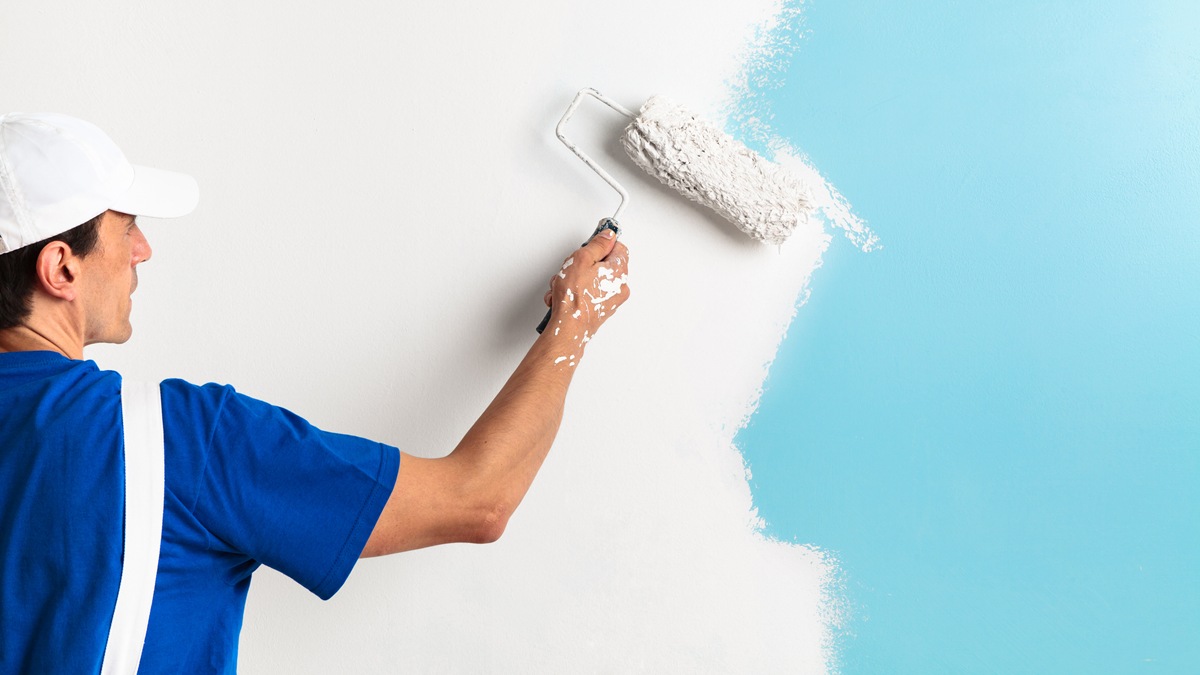Starting an interior painting project can feel overwhelming, especially when you’re staring down a wall with a brush in one hand and a roller in the other. One of the most common questions homeowners ask is, “when to use a roller or brush?” The answer isn’t always one-size-fits-all, but we’ve broken it down to help you make the right call for a smooth, professional-looking finish.
Key Takeaways:
- Use brushes for cutting in, trim, corners, and small areas.
- Use rollers for covering large, flat surfaces quickly and evenly.
- Match the tool to the paint type and surface texture.
- Quality tools make a big difference in your final result.

The Role of the Paint Brush
Paint brushes are your precision tool. They’re best for:
- Cutting in at edges and corners
- Trim work, like baseboards, door frames, and molding
- Touch-ups and small areas
Brushes come in various shapes and bristle types. Angled brushes, for example, are ideal for edging and corners. Synthetic bristles are better for water-based paints, while natural bristles pair well with oil-based paints.
Pros of Using a Brush:
- More control in tight or detailed spaces – Brushes allow for careful application around tricky areas like trim, outlets, and ceiling lines, reducing the need for painter’s tape.
- Better for textured or uneven surfaces – A brush can work paint into crevices or rough patches more effectively than a roller, making it ideal for older walls or intricate surfaces.
- Easy to maneuver in corners and edges – With their compact size and angled bristles, brushes make it easier to get clean lines where walls meet ceilings or in narrow spaces a roller can’t reach.
Cons:
- Slower than rollers for large areas – Using a brush to paint entire walls or ceilings takes significantly more time and effort, which can lead to fatigue and uneven coverage if not done carefully.
- Can leave visible brush strokes if not used properly – Poor technique, using low-quality brushes, or overloading the brush with paint can result in visible streaks or ridges that may require sanding or repainting to correct.
The Power of the Roller
When you’re painting a big wall or ceiling, rollers are your best friend. They allow you to cover large areas quickly and evenly.
Use a roller for:
- Walls and ceilings
- Flat, large surfaces
- Even paint application
The nap (thickness) of the roller cover matters. A short nap is best for smooth surfaces like drywall, while a longer nap is ideal for textured walls.
Pros of Using a Roller:
- Speeds up painting large areas – Rollers cover more surface area with each pass, making them the go-to tool for getting walls and ceilings done quickly and efficiently.
- Provides an even coat – Rollers distribute paint consistently across flat surfaces, reducing the chance of patchy areas or uneven coverage when used properly.
- Minimizes streaks and drips with the right technique – With a steady hand and correct pressure, rollers can lay down paint smoothly and cleanly, helping to avoid unsightly marks or dripping.
Cons:
- Difficult to use in tight spaces – Rollers are bulkier than brushes, making it hard to maneuver them in corners, behind fixtures, or along detailed trim without making a mess.
- Can splatter if used too quickly or with thin paint – Moving the roller too fast or applying overly thin paint can cause tiny droplets to fly off, leading to splatters on floors, furniture, and even the painter.

The Best Approach? Use Both.
The secret to a great interior painting project is knowing that it’s not an either/or situation—it’s about using the right tool at the right time. Professional painters almost always use both tools because each plays a critical role in achieving a polished, high-quality result.
- Cut in edges and corners with a brush – This allows you to outline the room with precision, reaching tight spots and creating clean lines that prevent overlap onto trim or ceilings.
- Roll the larger areas for a smooth finish – Once the edges are done, a roller helps you quickly fill in the rest with an even coat that dries consistently.
By combining the strengths of each tool, you’ll not only save time but also avoid common issues like uneven coverage, visible strokes, or missed spots. It’s the most efficient and effective way to get a professional look—without hiring one.
How to Choose the Right Tool for Your Project
Here’s a quick guide to help you decide:
| Task | Best Tool |
|---|---|
| Painting corners and edges | Brush |
| Painting large walls or ceilings | Roller |
| Painting trim and molding | Brush |
| Painting furniture or cabinets | Brush |
| Applying primer or base coat | Roller |
Tips for a Flawless Finish
When it comes to achieving a smooth, professional-looking finish, technique and preparation matter just as much as the tools you use. Here are some practical tips every homeowner should follow for flawless painting results:
- Invest in quality tools – Cheap brushes and rollers often shed bristles or fibers, leaving marks in your paint. High-quality tools hold paint better, last longer, and provide a more consistent finish.
- Don’t overload your brush or roller – Less is more when it comes to applying paint evenly. Too much paint leads to drips, runs, and a sloppy finish. Dip your brush just a third of the way into the paint or load your roller evenly without soaking it.
- Keep a wet edge – This prevents lap marks and helps blend sections seamlessly. Work in small sections and roll or brush into the previous area while it’s still wet to avoid visible lines.
- Practice good technique – Use long, smooth strokes and avoid pressing too hard, which can cause streaks and uneven texture. Let the brush or roller do the work with light, steady pressure.
FAQs
Can I use just a roller for my whole room?
You can, but the edges and corners will be tricky. Rollers are great for covering large, flat surfaces quickly and evenly, but they lack the precision needed for tight spots. You’ll still need a brush to cut in around ceilings, baseboards, window frames, and other detailed areas to ensure a neat, finished look.
What’s the best brush for cutting in?
An angled sash brush (2 to 2.5 inches wide) offers great control and precision. The slanted edge helps you follow lines and corners more accurately, making it easier to get clean, sharp edges where walls meet trim or ceilings. Choose synthetic bristles for water-based paints and natural bristles for oil-based options
Do rollers work on textured walls?
Yes, rollers can work very well on textured walls—as long as you use the right type. Choose a roller with a thicker nap (usually 3/4 inch or more) to ensure the paint reaches into all the grooves and crevices of the texture. Thinner naps may glide over the top and leave uneven coverage.
Conclusion: Use the Right Tool for the Job
When tackling your next interior painting project, remember that both tools have their strengths. Knowing when to use a roller or brush can save you time, reduce frustration, and deliver a more professional-looking result.
Want expert help or high-quality tools to get started? Contact TRICO PAINTING at 916-957-2633 — our painting specialists are here to guide you every step of the way.

